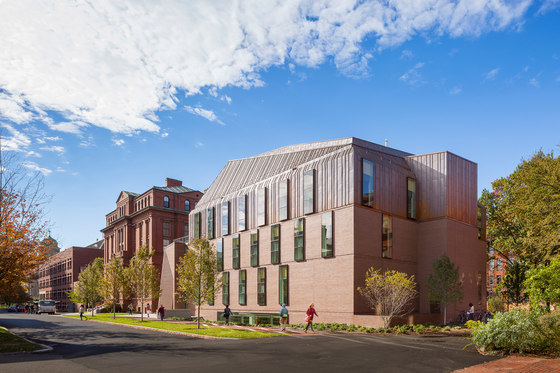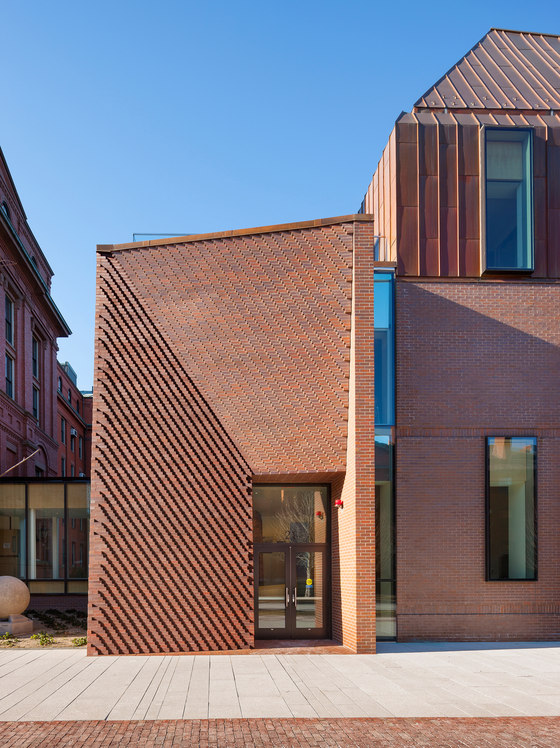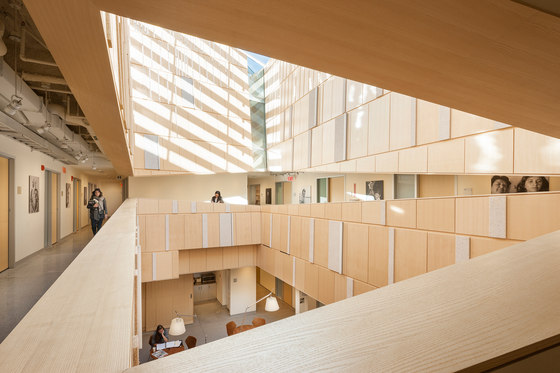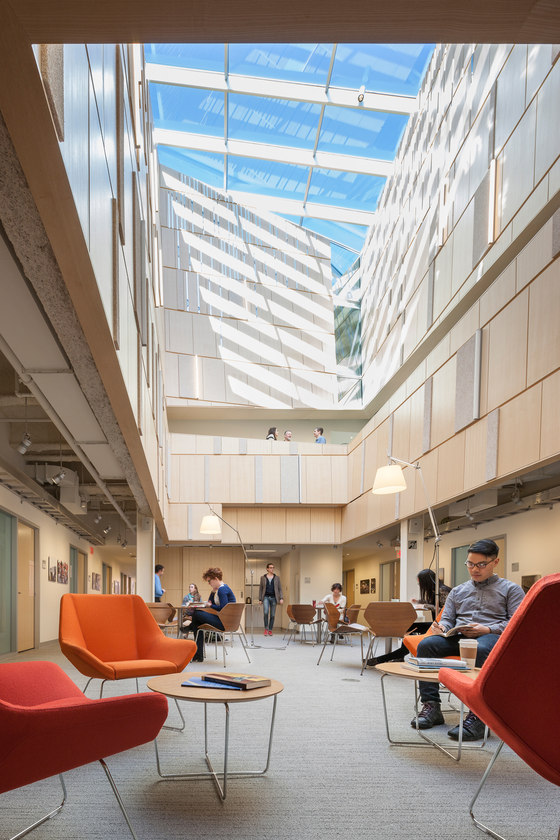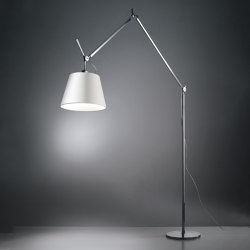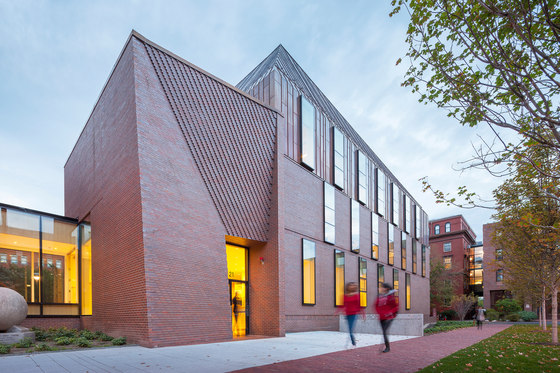Modern-era buildings are aging on campuses across America, due to obsolete building codes that cannot meet contemporary envelope, seismic, public access, and energy requirements. At the same time universities cannot dismiss the embodied energy and materials that went into constructing these buildings. The Tozzer Anthropology Building at Harvard University takes a bold approach to this problem, by consolidating the original library holdings and calling for new construction that builds upon the existing building’s carbon investment. The transformative adaptive re-use project creates a new public identity and program for Johnson and Hotveld’s 1971 Tozzer Library, while re-using the original building’s foundation, campus infrastructure connections, and steel and concrete structure.
The Tozzer Anthropology Building creates a new public presence on Divinity Avenue, and provides public access to the adjacent Peabody Museum and the Peabody Courtyard. The project’s new massing design increases usable SF by 29% by adding two stories of new construction under a large copper roof volume which highlights a new reading of the building as a pavilion in the Peabody Courtyard. The roof volume rotates to capture daylight for a large internal light well around which the program spaces revolve.
The existing brick envelope could not be re-used due to mold and vapor barrier problems. At the new entry pavilion, the design begins with a digital brick wall that stacks and corbels-transforming a contemporary 6” brick veneer cavity wall construction. Each brick unit is linked to the global geometry of the entry pavilion. Using software created specifically for this project, the corbelling was tested digitally and empirically in numerous prototypes. The 30’ brick entry has no control joints or relieving angles, just one custom-designed loose lintel set above the hung brick ceiling. Each brick course is shifted from the course below, creating a 3D brick envelope that is derived from-and could only work with-this specific massing form.
The main building is wrapped by taught brick bands which express the existing slab, off which the new brick envelope is relieved. Vertical expansion joints are staggered between floor levels while horizontal expansion joints occur behind recessed solider courses. The structurally-glazed projecting windows slide past the ‘thin’ brick envelop and align to provide large views from Library to Courtyard. With a play of “thick” and “thin”, the design creates an authentic brick expression that reflects contemporary design and construction and the layered brick depth of the Landmarked Peabody Museum.
The design team, working closely with the department, developed a contemporary Anthropology Library that facilitates the direct study of artifacts. The new program is organized around a torqued central light well clad in birch wood panels that are designed to reflect light and absorb sound. Offices, classrooms and informal gathering places encircle this “living space”, which brings daylight into the building, and creates visual relationships between floor levels. The light well circulates tempered air as part of an innovative energy-saving heat recovery/ventilation system that is integrated with a chilled beam system. The Tozzer Anthropology building has received LEED Gold certification, and has been awarded the 2016 Hobson Award, given by the AIA for the best new architecture project.
Kennedy & Violich Architecture
